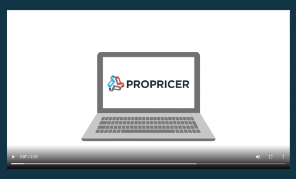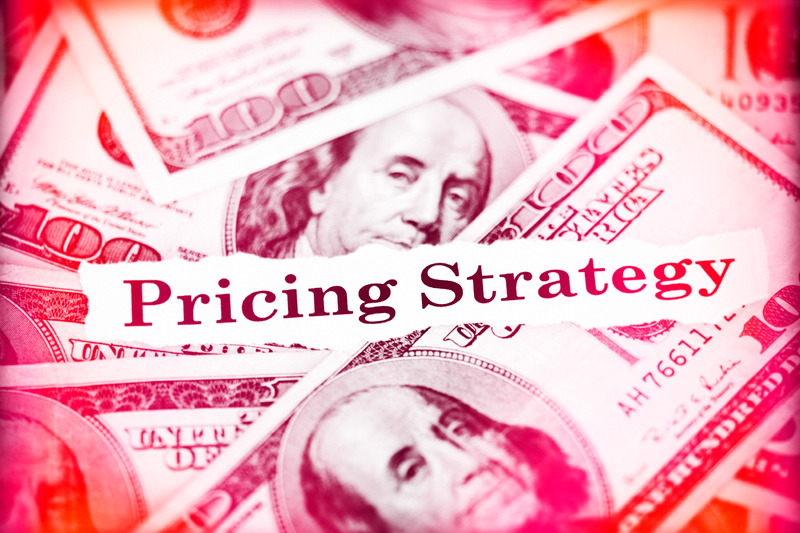When it comes to deciding how to price your products and services, and what to ultimately offer government agencies—no one knows better than you. Yet while you want to earn as much profit as possible, you also have to strike a balance between remaining competitive and doing the best for yourself as you can. This is where establishing a pricing advantage can help.
A pricing advantage enables you to use your price to gain the upper hand over your competitors and help your business succeed. So how exactly can you establish a pricing advantage for your government contract bid? It boils down to both covering your costs and protecting your profit. (1)
Ask your agency for pricing history.
Knowing your agency’s pricing history can help you gauge how much they’ll be willing to pay. You can get this information by contacting the agency’s buying office and asking for the point of contact. Other times, the contracting officer can provide you with a list of recent contracts for related services. You can also opt to contact a Procurement Technical Assistance Center and ask to run a digital review of your agency’s pricing history.
But perhaps the easiest way of obtaining your agency’s pricing history is with ProPricer Government Edition—a popular pricing software platform for agencies. If your agency has used ProPricer in the past, their historical data will be easily accessible. Every piece of information is stored in a centralized location, allowing your team to quickly review, reuse, and report on legacy—as well as current—cost and pricing data.
Think carefully about special and quality requirements.
No two government contracts are alike. Sometimes, you have to go above and beyond to fulfill special requirements for the job. When this happens, it’s only appropriate you’re fairly compensated.
Consider whether you’ll have to take on any costly extras to complete the job. Estimate the cost for any certifications you may have to provide, as well as unusual packaging requirements, and so on. Include these estimates in your price, and make sure to be as transparent as possible. Getting your indirect rates accurately set is extremely important. There are a number of techniques to ensure you and your team get your rates right the first time.
Don’t forget to consider bidding costs.
It’s great when the bidding process is simple and straightforward—but this isn’t always the case. Especially for high-value contracts, you’ll be expected to devote more time and resources just to get your foot in the door.
As a general rule of thumb, you can expect the cost of putting together an offer to range between 3% to 4% of the contract’s proposed value. If you move on to win the contract, make sure to compensate yourself for the bidding process accordingly.
Factor in overhead. Make a profit.
The bidding process is competitive. While you want to bring in as much profit as you can, you also need to be reasonable. Ultimately, you won’t receive any profit unless you secure the contract—and you won’t secure the contract unless you have some kind of advantage.
No matter what, you should never bid on a project if it doesn’t make good business sense. Obviously, your pricing needs to cover your overhead costs. And while this may sound basic, you’d be surprised how many times it doesn’t happen.
It also helps to estimate your cost information as closely as possible. Think of it this way: the more accurate your cost data, the more accurate your bid. You also want to be as above-board as you can about your costs and pricing strategy. Transparency combined with accuracy will help you remain competitive.
Pro Tip: For easier, more accurate pricing, learn about ProPricer Contractor Edition’s “Target Profit Fee” feature in this video.
Know that under GSA, all agencies will ask for a discount.
The General Services Administration (GSA) typically encourages agencies to seek discounts. If you’re applying for contracts through the GSA Schedule, you’re going to have to accommodate.
Try to establish a different set of prices for GSA Schedule contracts that takes into account order sizes, types, complexities, and geographical regions. Know you’ll have to cut your prices at the order level, so make sure your initial price structure reflects this. (3)
Your proposal platform? Your most profitable pricing advantage.
Your proposal software can truly be your most powerful pricing advantage—as long as you choose the right one. Unlike other systems, ProPricer Contractor Edition compiles all your cost, pricing, and resource data into a single, unified database. You’ll gain new levels of confidence, knowing your pricing formulas, structure, and user permissions are easily accessible from one place.
Even more importantly, ProPricer gives you a head start on every new proposal by automatically compiling your previous costs from historical job data to accommodate future scenarios.
ProPricer Contractor Edition also allows you to stop wasting time and resources on Excel. While manually entering data into spreadsheets may have helped you attain the contract success you’ve earned up to this point—you’re going to need a smarter system for a real pricing advantage.
ProPricer Contractor Edition is proven to be five times faster than spreadsheets during manual data entry due to predictive typing features and up to ten times faster when you use the upload capability for inputs like Basis of Estimate and Hours.
Learn how speed can give your business the pricing advantage it needs to succeed. Check out ProPricer Contractor Edition here.
Sources
- WoltersKluwer article: How to establish a profit-generating price for a government contract bid
- ProPricer eGuide: Sync with Agency Contract Preferences
- GSA Website: Schedule Pricing




